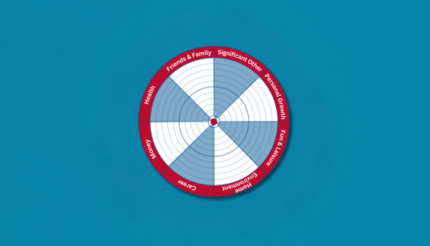The better you communicate, the easier it is to build the “know, like, and trust” factor with everyone in your circle. It’s in your best interest to develop good communication skills to make sure people understand your message correctly and help you meet your goals.
As a rule of thumb, communication is less about what you want to transmit and more about the response you get. Do you often feel like you’ve said one thing but realise that the other person perceived it differently? It happens more often than you think, and it’s generally the result of poor communication.
So, let’s see how you can avoid this scenario and learn to communicate effectively.
1 Pick the right medium for each message
The first tip is to ‘take responsibility for’ how you share information with others. Whether you are communicating with business partners, employees, friends, or family members, you should ‘own’ the way you express your ideas.
Consider what you want to communicate … and frame what you say in the right kind of tone. Think about clarity – how well will other people receive, understand and retain your message?
Overall, face-to-face is the best form of communication because it leaves little room for misunderstandings. However, the last year and a half has meant that it’s not always possible to have these in-person conversations.
So, learn to use technology to optimise the way you communicate. For example, it’s not ideal to share negative news via messages or email. If there’s a problem, pick up the phone and talk to the other person directly and with empathy. You are more likely to get the responses you want.
Even though text and email are frequent and accepted methods of communication, they don’t trigger the same reactions for us humans as an in-person conversation.
2 Learn to communicate with empathy
Another tip that helps you become a better communicator is using the Visual-Auditory-Kinesthetic learning styles model (VAK). It describes how people use three primary methods to learn and communicate. We each use all three methods to communicate, but in different proportions:
 Visual – people who acquire an understanding of things by seeing and reading.
Visual – people who acquire an understanding of things by seeing and reading.
They “paint pictures” when communicating, using descriptions, active verbs and visual terms. At the same time, they will be looking for these elements because they will want to visualise your messages.
 Auditory – people who process things using their ears more than their eyes.
Auditory – people who process things using their ears more than their eyes.
They are more likely to retain information through sound. They will pay attention to tone of voice and rhythm. They thrive on recordings, audio messages and podcasts.
 Kinaesthetic – doers.
Kinaesthetic – doers.
They need to touch things and will focus on feelings and experiences. When you communicate with ’doers’, you need to recall experiences and sensations to help them understand what you want to get across.
Some folks are visual learners while others are auditory or kinaesthetic. It’s almost like we’re speaking different versions of the same language.
Expert communicators are always aware of the type of people they are themselves and they will look for clues to understand what types of learners others are before composing/publishing/sending/delivering important communications. They make a conscious effort to adjust how they communicate to suit different recipients.
If you’re talking to a broad audience, use multiple elements to make sure everyone in the room understands your message.
3 Become an Active Listener
Whether you are talking to someone or sitting in a lecture, make sure your mind is focused on what you’re hearing. Active listening means taking notes, asking questions and, overall, listening to understand.
Passive listening (ie ‘just listening’) can allow your mind to wander away … perhaps you even do something (read emails, check notifications, play a game?) on your phone while someone else is communicating with you.
The solution to better communication is active listening. You look to dig deeper and understand fully what people feel when they are talking to you. Instead of assuming that you’ve heard everything and taken it all in, almost ‘play dumb’ and ask more questions to understand why people are saying what they’re saying.
Use phrases like “What I’m seeing here is …” or “From what you’re telling me …” to make people feel heard, not just seen, in a conversation. Take notes during meetings to show that you’re paying attention and capturing what’s being communicated.
An easy trick here is using the “feel, felt, found” formula to create a connection with the other person — “I understand how you’re feeling; that’s how I’ve felt too, but here’s what I’ve found …” This way, you control the emotions in the conversation and appeal to logic, so avoiding miscommunication or tricky situations.
A Word on Public Speaking
If you are going for a leadership position, communication will be a vital part of your success. So you need to prepare yourself to communicate to groups of people. Here are three steps that will help you develop your public speaking skills and ensure that you put your points across effectively.
Preparedness
When you get ready for a speech, you need to do more than just know your topic or put together a slide presentation. Think about preparing some stories, things that will make people feel excited about what you say.
Structure the information in a way that is easy to digest. Formulas like “6 ways of …” or “5 steps to …” are excellent openers for capturing attention and keeping people engaged. Have a story that communicates a message for each main point and include a lesson – a learning, an action, a takeaway – within the story to facilitate understanding.
Make sure you don’t try to deliver too much information at once or you risk overwhelming the audience and losing their attention.
Participation
Make sure you’re not just lecturing people. You want to have a conversation with them. Make it fun and easy for listeners to engage with you.
Aim for “edutainment”, not just giving a boring speech about something. Think about the success of TED Talks, and any favourites you have watched – why did you like those ones particularly?.
Paint a picture of your story so the audience get a feeling for what you’re saying. Think back to the types of communicators/learners and consider that there will be plenty of each type in your audience. Aim to communicate in a style that covers all three modes. Engage, inspire, and make people feel good.
Self-talk
To deliver speeches well to different audiences, you first need to be good at talking to yourself! As Brad Sugars says, “It’s what you say to yourself about yourself when you’re by yourself that matters the most.”
Make sure you have that conversation with yourself. Don’t just try to learn how to master communication externally, aim to master internal communication too. Communicate positive ideas and comments to others and to yourself. Change the narrative so that the little voice in your head is optimistic and positive. You are in control of the way you want to see the world, so make that vision uplifting and strive to build the best version of yourself.
Self-talk can be either the builder of self-esteem or the robber of confidence.
What’s Next?
Start by learning more about the people you communicate with regularly. Who are the 5-10 people you speak to the most? Do you know whether they’re visual, auditory, or kinaesthetic communicators? Try to understand their ways of processing information in order to communicate better with them.
At the same time, it’s best to know what type of communicator you are yourself. If you need help with that, ActionCOACH has a methodology that helps you define your learning styles, and I can easily take you through the process. Sign up for a free coaching session and let’s talk about how you can master your communication skills.





